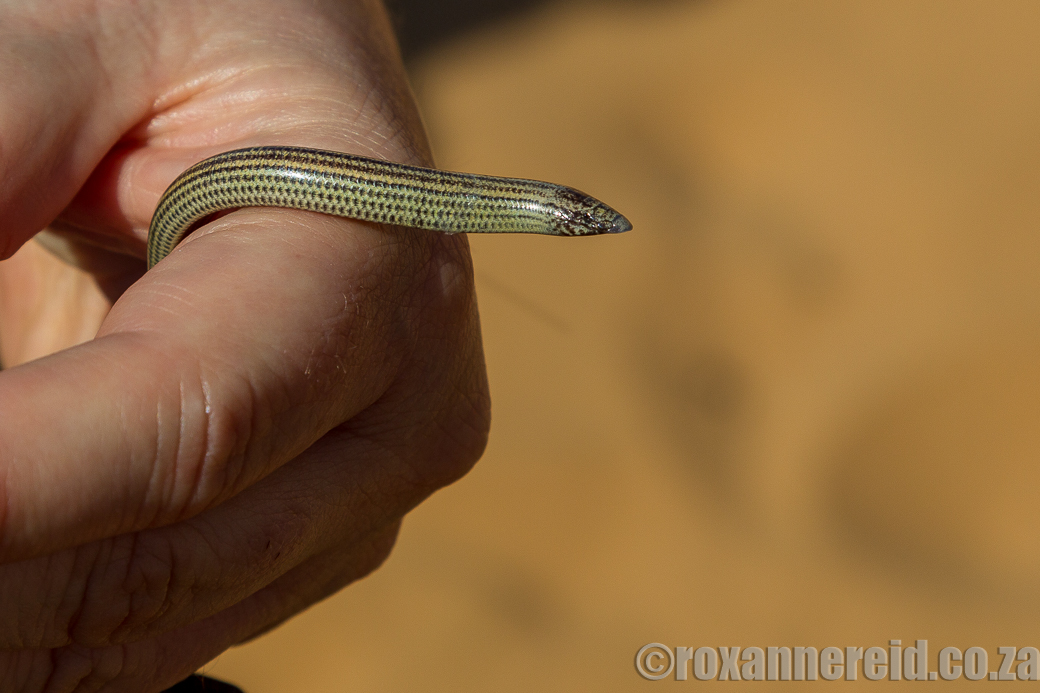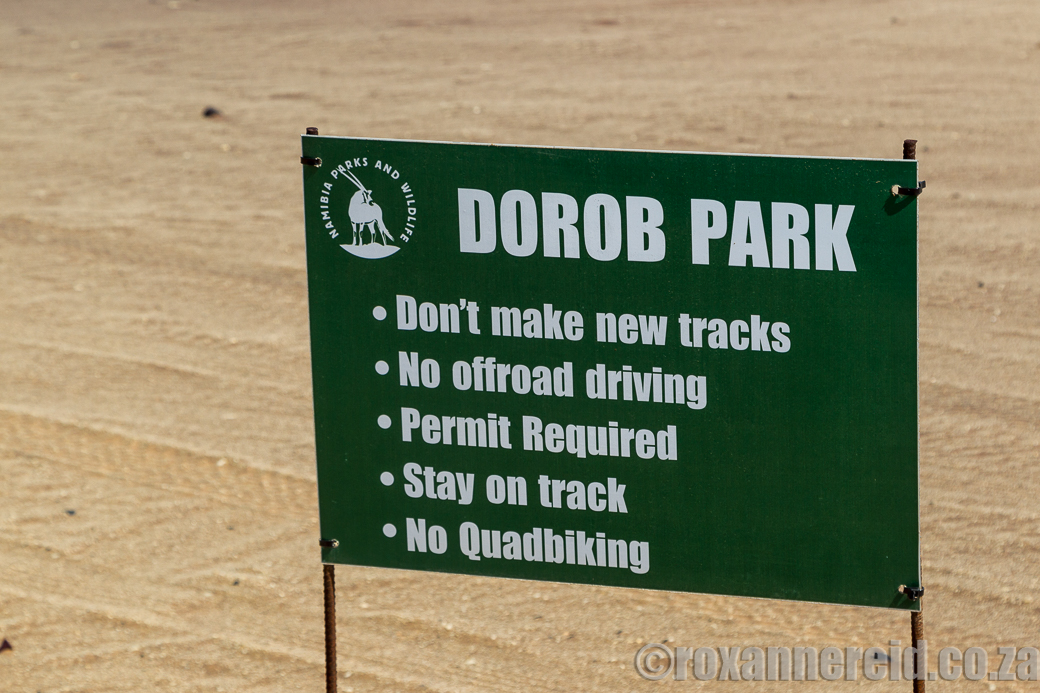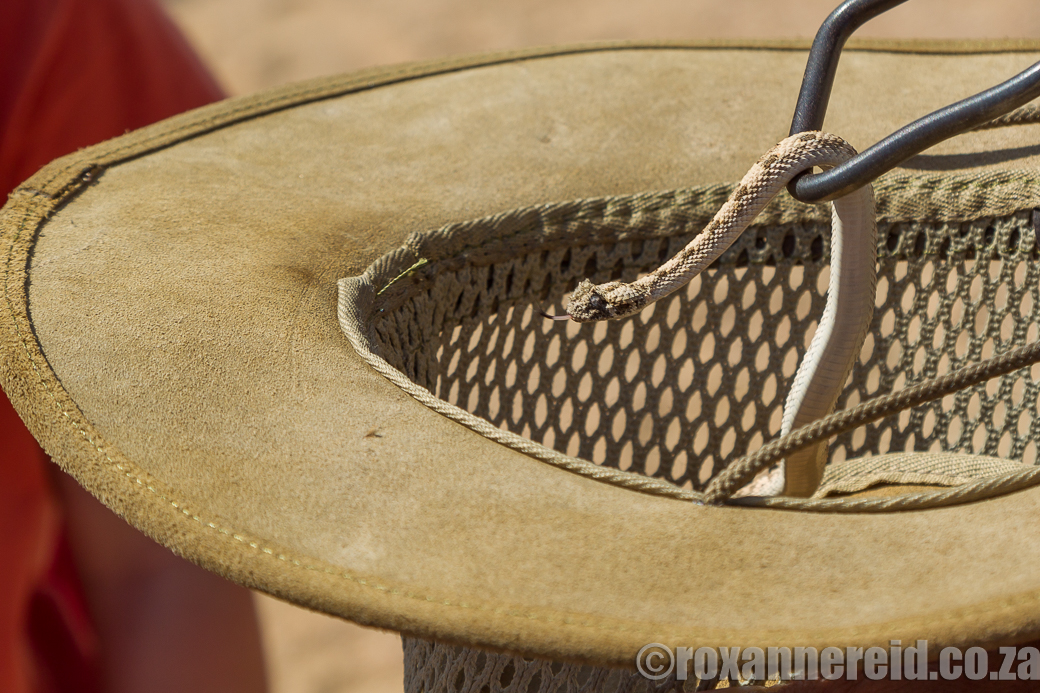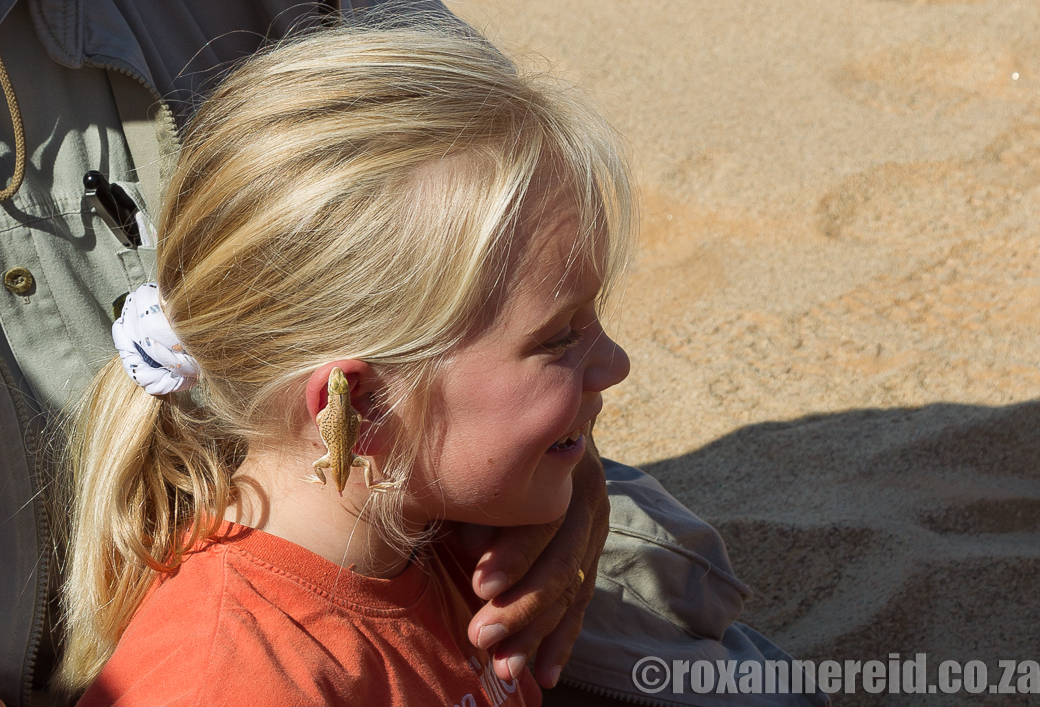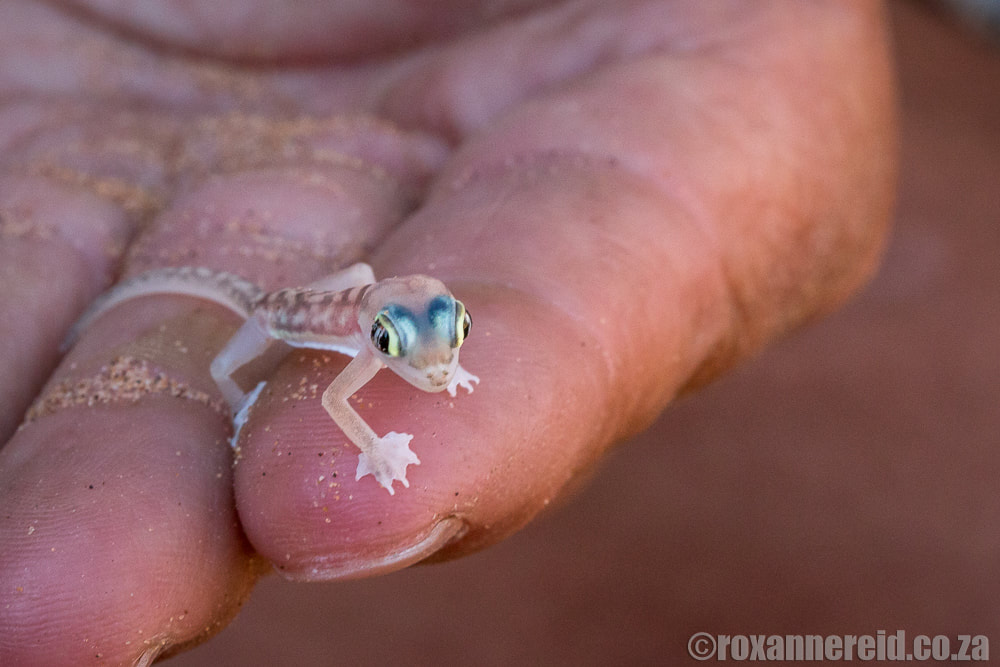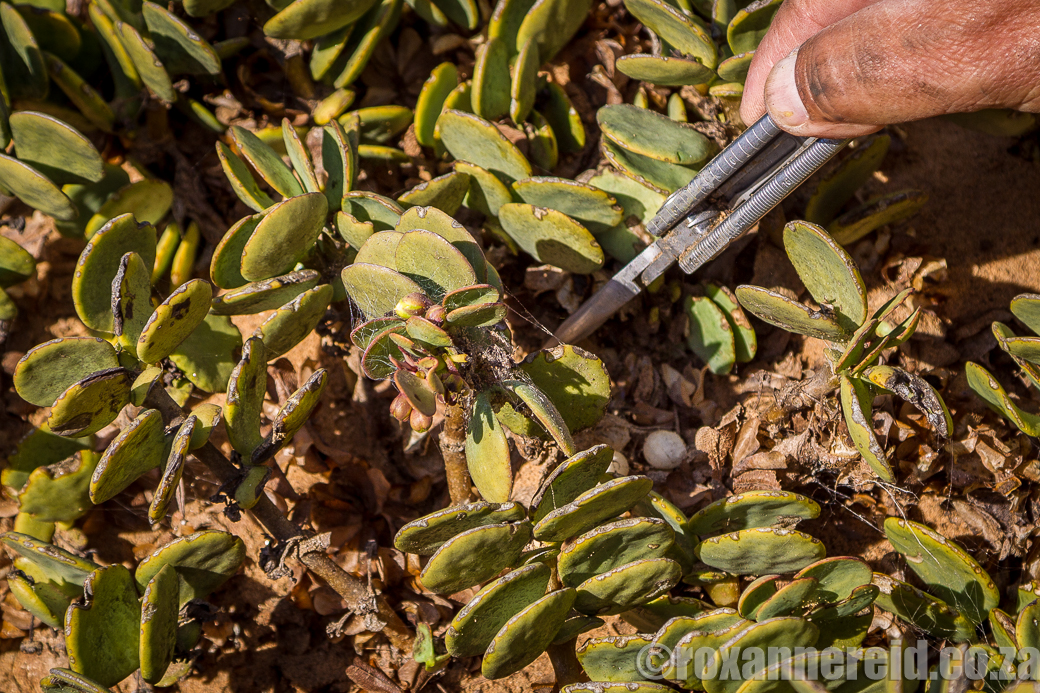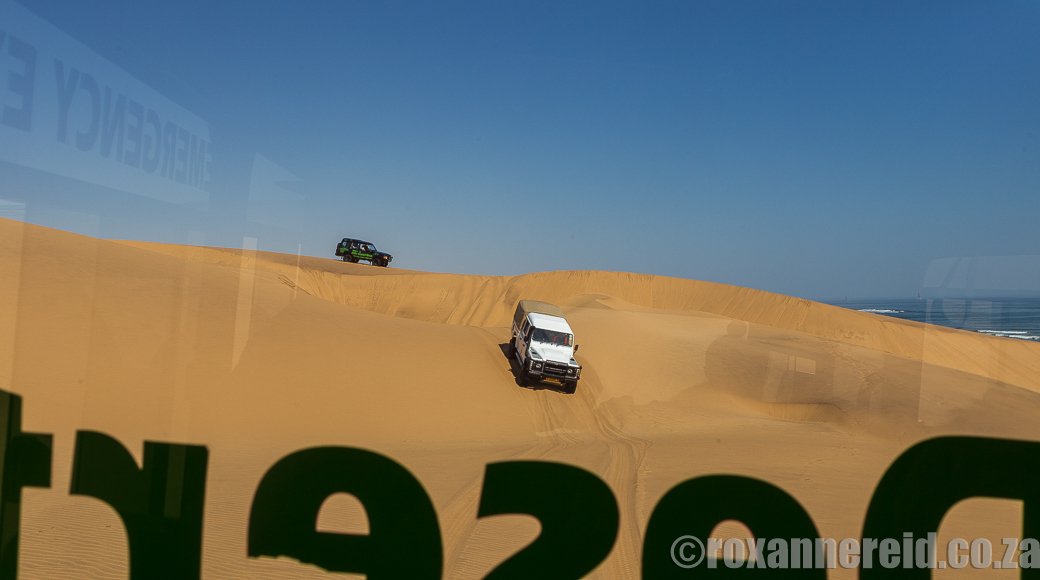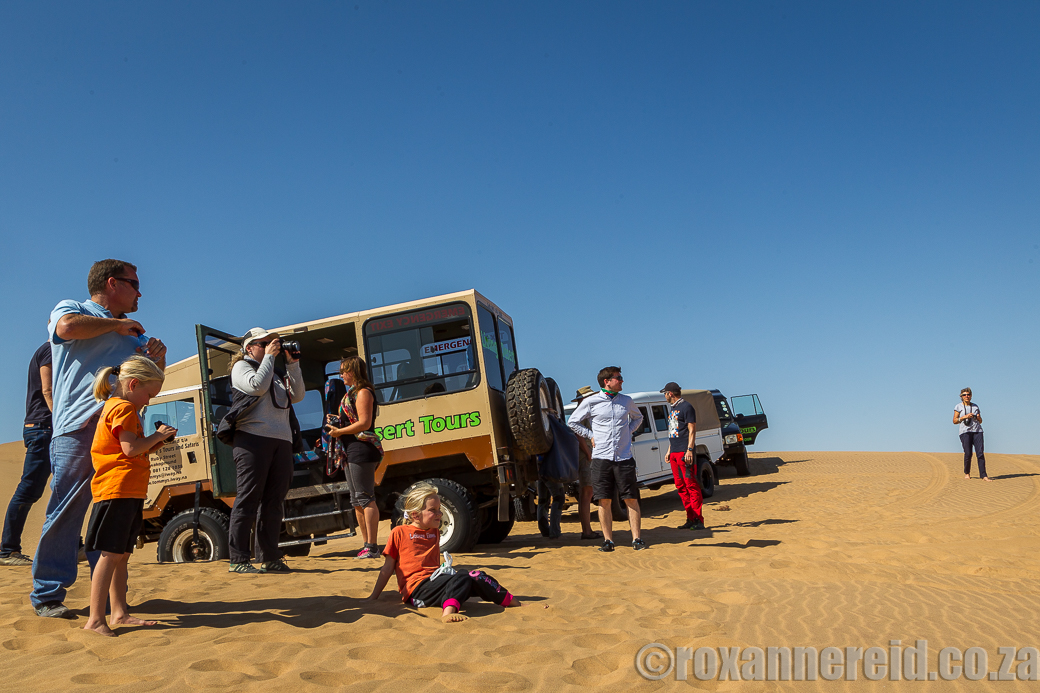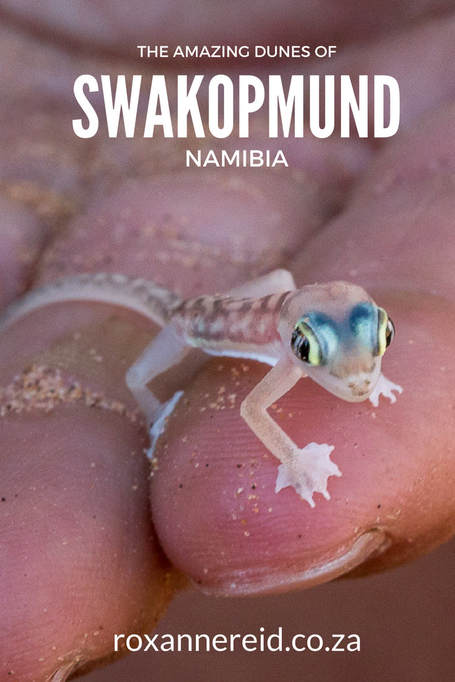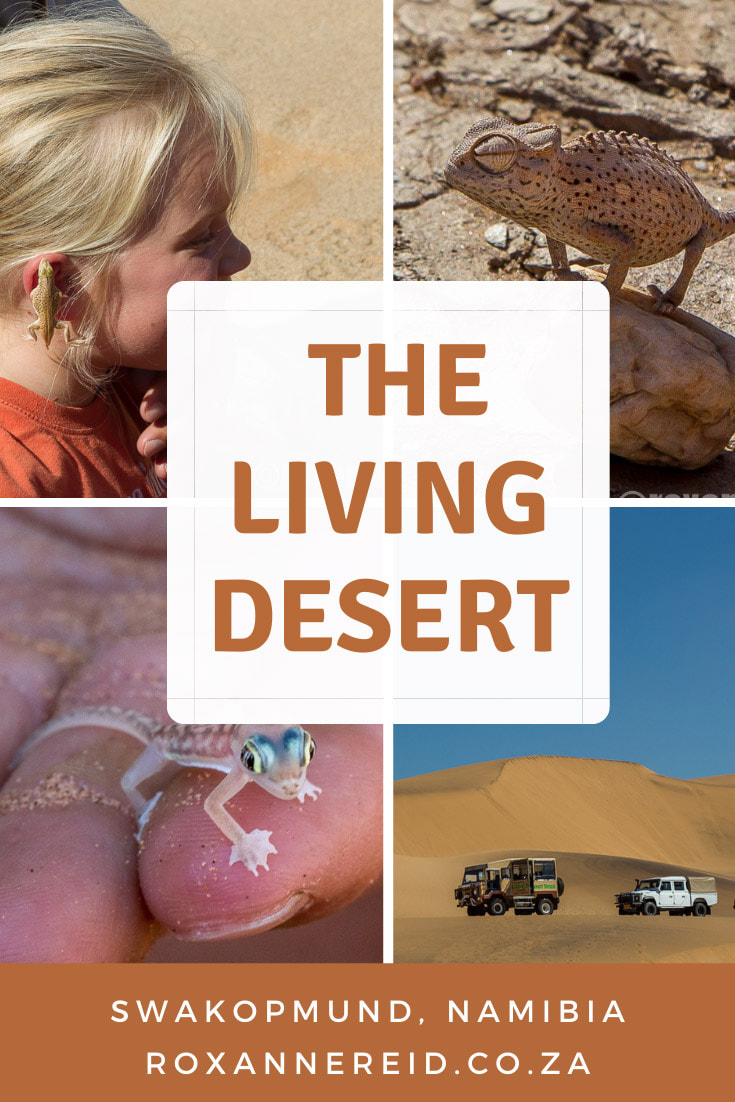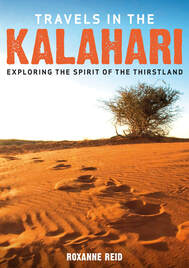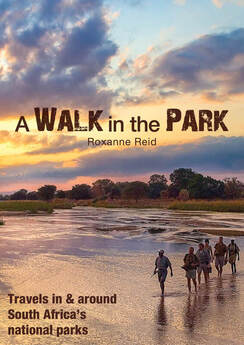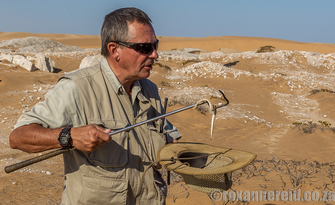
He was a whirlwind of energy, sand flying as he dug in search of creatures that had left tiny hints of their presence, wiggling his bare feet into the sand where it was cooler than the hot surface. This was Tommy Collard leading us into the dunes of the Dorob National Park outside Swakopmund, Namibia, proving that the dunes are more alive than you think.
By the time the tour spat us out of the dunes within sight of the waves of the Atlantic Ocean five hours later, we’d had a morning of fun and excitement. We’d also got an insight into the ingenuity of the desert-adapted creatures that make their homes in this harsh environment.
Take, for instance, the Tenebrionid beetles. ‘They stand at the top of the dune, arse in the air,’ said Tommy. ‘Their wings are fused together, their back waxy and the water from the fog condenses and runs down their back and into their mouth.’ They can drink 40% of their body weight in water in a single morning. That’s like a full-grown man drinking 16 two-litre bottles of water, so Tommy calls them ‘mobile water bottles’. He also calls them ‘chameleon hamburgers’ because when a chameleon eats one it gets the benefit of both food and water.
The Namib includes three types of desert – mountains, dunes and gravel plains. The gravel plains contain gypsum so vehicle tracks make scars that can last for 50 to 100 years. ‘This is an ecological Red Zone, which means it’s supersensitive, especially the gravel plains,’ he said.
When quad biking first started here they used to go anywhere, which annoyed Tommy no end. Not one to complain without taking action, he took the guides on a tour of the dunes to show them all the creatures that live there and explain about the damage quad bikes can cause. Now the tours stick to fixed routes and don’t make new tracks. ‘If you drive over a small chameleon or gecko it will have a case of acute depression,’ he joked, but his message was a serious one.
Also, chameleons bury their eggs and if you drive over that spot you compress the ground so the youngsters won’t be able to dig themselves out and they’ll die. ‘The fine for making new tracks is much too low so we’re working on getting that increased significantly,’ he said.
Most protein coagulates at 55ºC and here surface temperatures can reach 75ºC, so desert creatures have had to adapt to survive. Just 14mm below the surface the sand is usually 14ºC cooler, so when there’s no shade from plants or stones many of the desert creatures burrow into the sand.
In all his years of exploring, it would appear that Tommy has also adapted to the desert. He brought along an instrument to measure the surface temperature of the sand, to show us the difference between the two sides of the dune. Even in winter, by 10am the slip-face was 53ºC and shortly after noon he clocked it at 63ºC. Still barefoot, he just burrowed down with his feet to the cooler sand.
There are other adaptations to this hot surface temperature too. To prevent its feet from burning the shovel-snouted lizard will do a thermal dance, lifting one front leg and the opposite hind leg in rotation. It has two bladders, one for urine and another for water. This feisty little guy will bite and hang on to anything in range, so Tommy had fun with the kids in our party, attaching one to their ears or fingers for a few moments before setting it free unharmed.
By mid morning the temperature in the dunes had soared till I could almost hear my skin roasting as moisture evaporated. I was trying to stay close to the vehicle for its small patch of shade, but Tommy was still striding up and down barefoot, dropping to his knees and digging here, poking around gently in a small bush there, determined to find as many of his desert friends as possible to show us. His energy in the heat was undiminished, his knowledge mesmerising.
There was lots of excellent driving too, full speed up steep dunes, cutting the throttle just as we got to the top so we didn’t fly over and do any somersaults. At one point we got stuck at an angle in the deep soft sand and it felt like we were going to topple, but within a minute Tommy had driven us out again and over the last dune to where we could see the sea.
After a fun morning, the best was that we weren’t even dirty. ‘There’s no dust in the white and yellow sand of the dunes,’ said Tommy. ‘Kids can play here all day and then at night you just have to vacuum their ears and put them to bed.’
There are other companies offering tours of the dunes although Tommy’s was the first, started in 1997. The names of the various companies can be confusing, many incorporating the term ‘living desert’, so if you want the most knowledgeable guide who can rattle out fascinating facts about this environment like a high-speed machine gun, make sure you book with Tommy’s Living Desert Tours. I can promise you won’t be sorry.
Did you enjoy the article? Pin this image!
Copyright © Roxanne Reid - No words or photographs on this site may be used without permission from roxannereid.co.za
